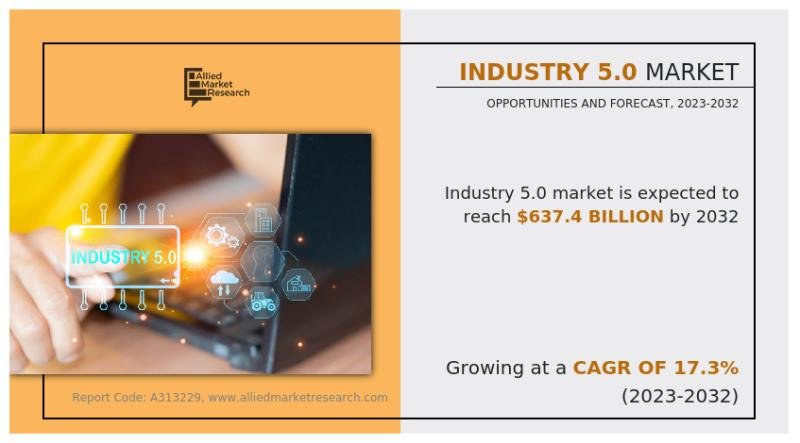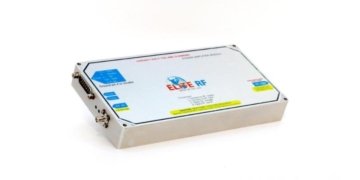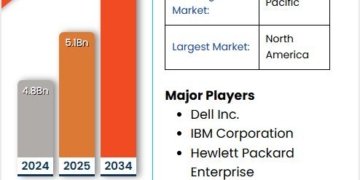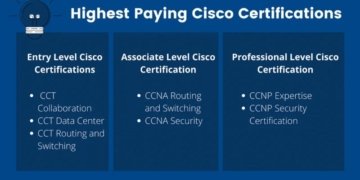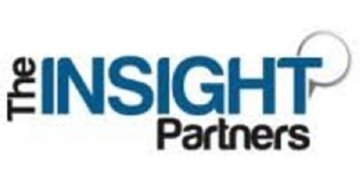According to a new report published by Allied Market Research, titled, “Industry 5.0 Market,by Technology, and End-Use Vertical: Global Opportunity Analysis And Industry Forecast, 2023-2032” The industry 5.0 market was valued at $129.05 billion in 2022, and is estimated to reach $637.4 billion by 2032, growing at a CAGR of 17.3% from 2023 to 2032.
Download Research Report Sample & TOC : https://www.alliedmarketresearch.com/request-sample/A313229
Industry 5.0 represents the latest evolution in manufacturing, marking a departure from the purely automated systems of Industry 4.0 to a more collaborative and synergistic approach between humans and machines. This paradigm shift seeks to harness the unique strengths of both elements, creating a harmonious coexistence that enhances efficiency, flexibility, and innovation in industrial processes.
At the core of Industry 5.0 lies the concept of human-machine collaboration. Unlike its predecessors that focused on automation and machine-to-machine communication, Industry 5.0 integrates human intelligence, creativity, and problem-solving skills into the manufacturing ecosystem. This collaboration is facilitated by advanced technologies such as collaborative robots (COBOTS), digital twins, and augmented reality.
One of the primary applications of Industry 5.0 is witnessed in smart factories, where human workers and machines work together seamlessly. Collaborative robots, equipped with sensors and machine learning algorithms, can operate alongside humans on the factory floor, taking over routine tasks and allowing human workers to focus on complex decision-making processes. This collaborative approach enhances overall productivity and product quality.
Request For Customization @ https://www.alliedmarketresearch.com/request-for-customization/A313229
Industry 5.0 leverages digital twin technology to create virtual replicas of physical systems. These digital twins enable real-time monitoring and analysis, facilitating predictive maintenance and reducing downtime. Virtual Reality (VR) is employed for immersive training simulations, allowing workers to familiarize themselves with new equipment and processes in a virtual environment before execution in the physical world.
The incorporation of predictive analytics is a key aspect of Industry 5.0, especially in Manufacturing 5.0, and Industrialization 5.0 optimizing supply chain operations and maintenance activities. By analyzing historical data and real-time information, manufacturers can anticipate potential disruptions in the supply chain, enabling proactive decision-making. Predictive maintenance ensures that equipment issues are identified before they escalate, minimizing downtime and optimizing resource utilization.
Industry 5.0 finds applications across diverse end-user verticals, transforming traditional manufacturing processes across industries. In the automotive sector, for instance, collaborative robots are employed for intricate assembly tasks, enhancing precision and reducing production time in 5.0 Industrial Revolution. The aerospace industry utilizes Industry 5.0 principles for design and manufacturing, ensuring a balance between human ingenuity and machine precision.
While Industry 5.0 presents immense opportunities for enhanced productivity and innovation, challenges exist. High installation costs pose a financial barrier for some companies looking to adopt these advanced technologies. Additionally, concerns regarding data privacy and regulatory compliance require careful consideration to ensure a secure and ethical implementation of Industry 5.0 practices.
The industry 5.0 market segmentation is segmented based on technology, end-use vertical and region.
On the basis of technology, the Industry 5.0 Market Size is divided into Robotics, Internet of Things (IoT), Automation, Augmented Reality and Virtual Reality, Cloud Computing, Big Data, and Others. In 2022, the robotics segment dominated the Industry 5.0 Market Share, and it is expected to acquire a major market share by 2032 owing to increase in use of collaborative robots in automotive and manufacturing end-use vertical.
On the basis of end-use vertical, the Industry 5.0 market growth projections is categorized into manufacturing, healthcare, telecommunication, automotive, semiconductor, and others. In 2022, the manufacturing segment dominated the market, and automotive is expected to acquire a major market share by 2032 due to increase in investment of private companies in automotive sector.
On the basis of region, the Industry 5.0 market analysis is carried across North America (the U.S., Canada, and Mexico), Europe (Germany, UK, France, Spain, Italy, and Rest of Europe), Asia-Pacific (China, Japan, India, South Korea, and rest of Asia-Pacific), Latin America (Brazil, Argentina and Rest of Latin America), and Middle East and Africa (Saudi Arabia, Africa, and Rest of Middle East And Africa). Asia-Pacific, specifically China, remains a significant participant in the industry 5.0 market with a CAGR of 18.50% due to robust technological adoption, manufacturing prowess, and government initiatives promoting advanced industrial practices, which is driving the growth of the industry 5.0 industry in Asia-Pacific region.
The key players profiled in the report include ABB, Kuka AG., Universal Robots A/S, Nexus Integra, Siemens A.G., Rockwell Automation, Inc., Schneider Electric, Cisco Systems, Inc., FANUC CORPORATION, and Yaskawa Electric Corp. The key strategies adopted by the major players of the Industry 5.0 market is product development. . For instance, in August 2022, ABB (Switzerland) launched its new smart factory in India which follows Industry 5.0 standards that includes human and cobots collaboration. The launch of new smart factory will enhance the productivity by 40%, and expected to have a test automation ration of around 50%.
Inquiry Before Buying : https://www.alliedmarketresearch.com/purchase-enquiry/A313229
Key Findings of the Study
In 2022, manufacturing segment dominate the market in terms of revenue. Moreover, the manufacturing segment is projected to manifest highest CAGR during the forecast period owing increase in focus on smart manufacturing practices.
In 2022, the robotics segment dominated the industry 5.0 market demand in terms of revenue and automation is expected to grow at highest CAGR during the forecast period owing increased demand for efficiency, cost savings, and streamlined industrial processes in diverse sectors.
Asia-Pacific, specifically China, remains a significant participant in the industry 5.0 market with a CAGR of 18.50% due to robust technological adoption, manufacturing prowess, and government initiatives promoting advanced industrial practices, which is driving the growth of the industry 5.0 industry in Asia-Pacific region.
Read More Reports :
https://www.alliedmarketresearch.com/grow-lights-market-A06157
https://www.alliedmarketresearch.com/rfid-tags-market-A09889
https://www.alliedmarketresearch.com/battery-management-system-market-A06637
Contact:
David Correa
1209 Orange Street,
Corporation Trust Center,
Wilmington, New Castle,
Delaware 19801 USA.
Int’l: +1-503-894-6022
Toll Free: +1-800-792-5285
Fax: +1-800-792-5285
help@alliedmarketresearch.com
Web:https://www.alliedmarketresearch.com
About us :
Allied Market Research (AMR) is a full-service market research and business-consulting wing of Allied Analytics LLP based in Wilmington, Delaware. Allied Market Research provides global enterprises as well as medium and small businesses with unmatched quality of “Market Research Reports” and “Business Intelligence Solutions.” AMR has a targeted view to provide business insights and consulting to assist its clients to make strategic business decisions and achieve sustainable growth in their respective market domain.
We are in professional corporate relations with various companies, and this helps us in digging out market data that helps us generate accurate research data tables and confirms utmost accuracy in our market forecasting. Each and every data presented in the reports published by us is extracted through primary interviews with top officials from leading companies of domain concerned. Our secondary data procurement methodology includes deep online and offline research and discussion with knowledgeable professionals and analysts in the industry.
This release was published on openPR.
